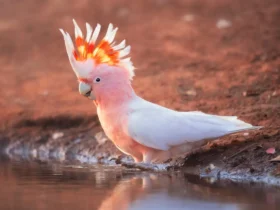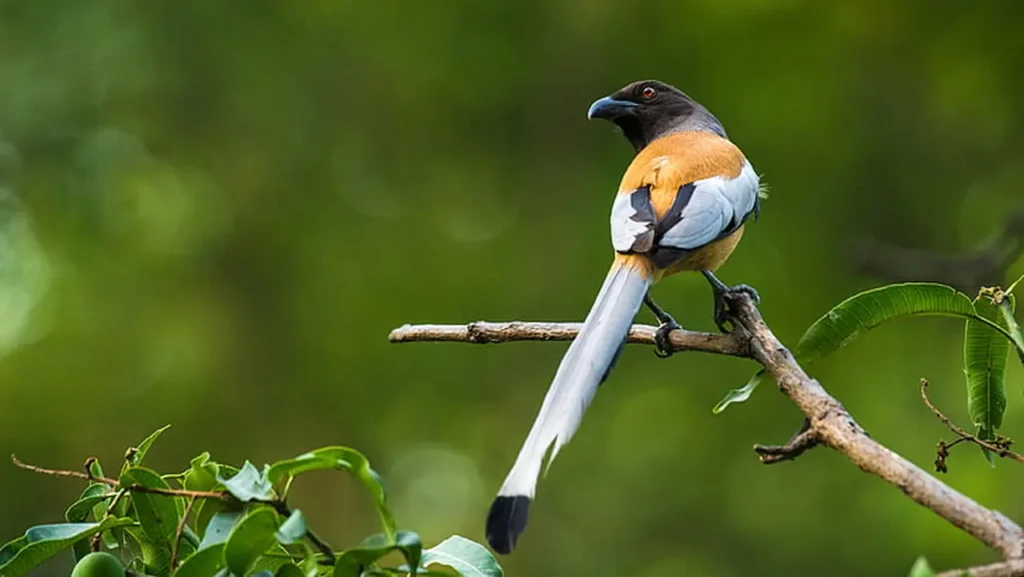
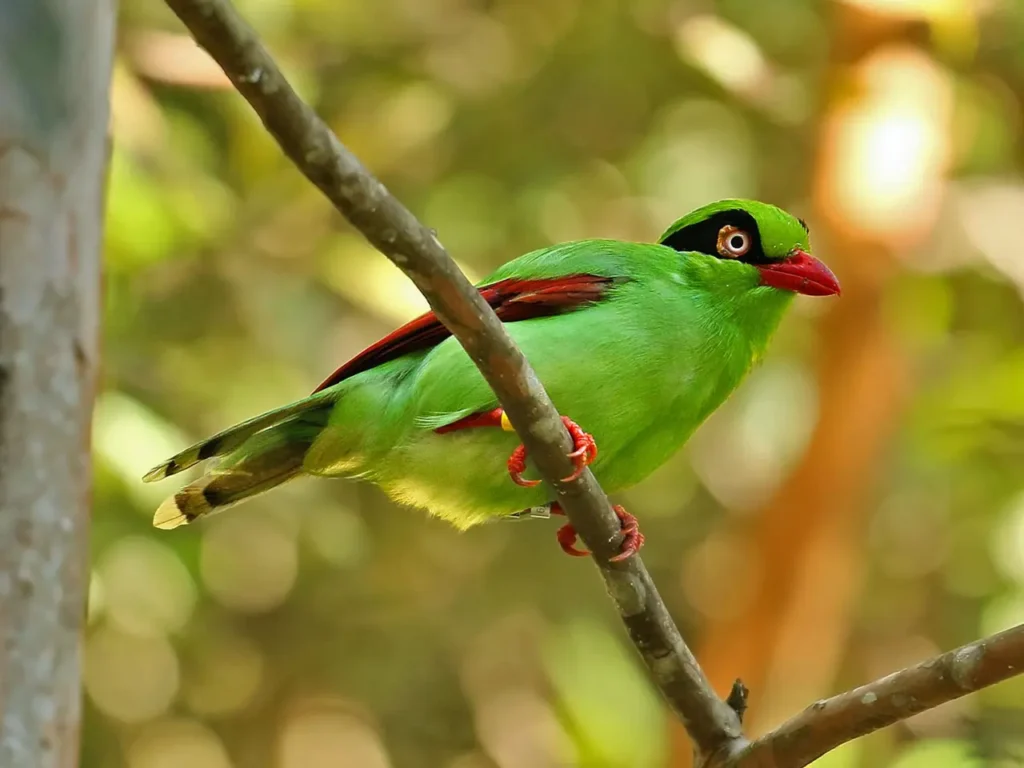


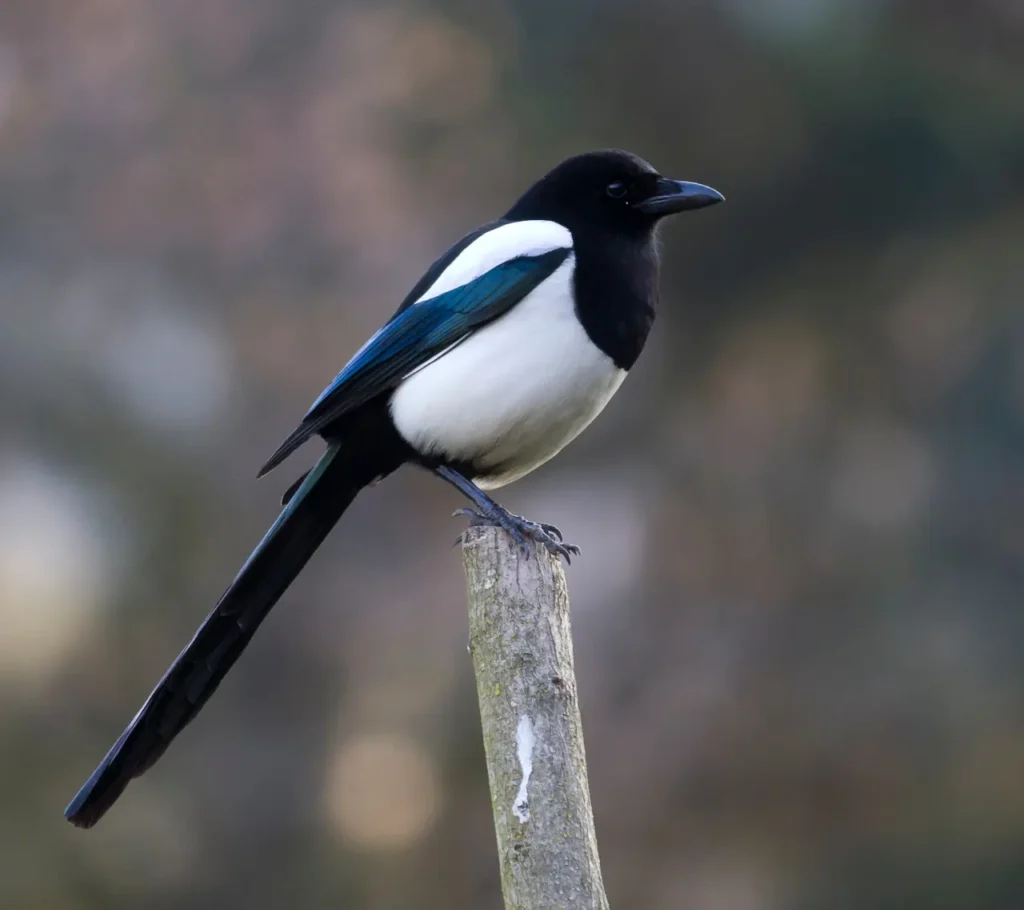
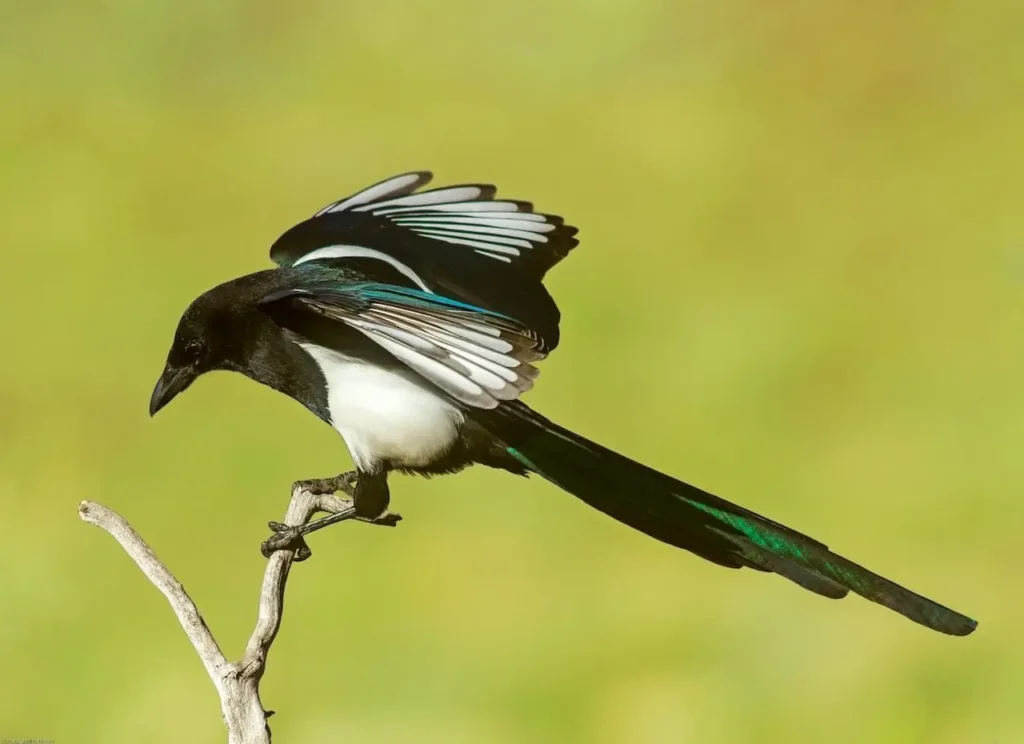
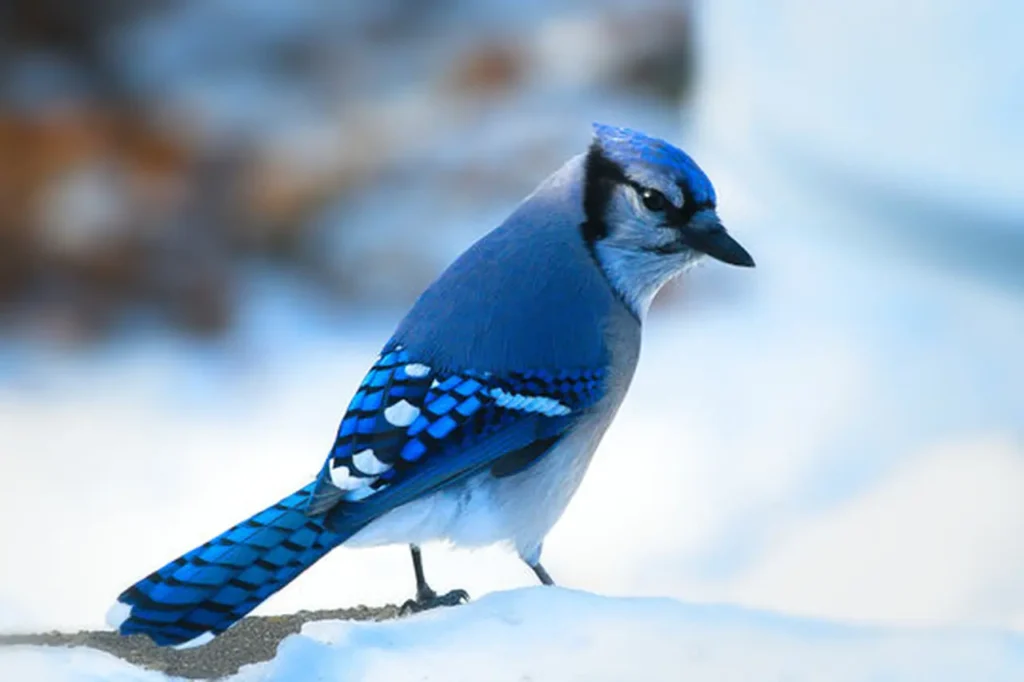
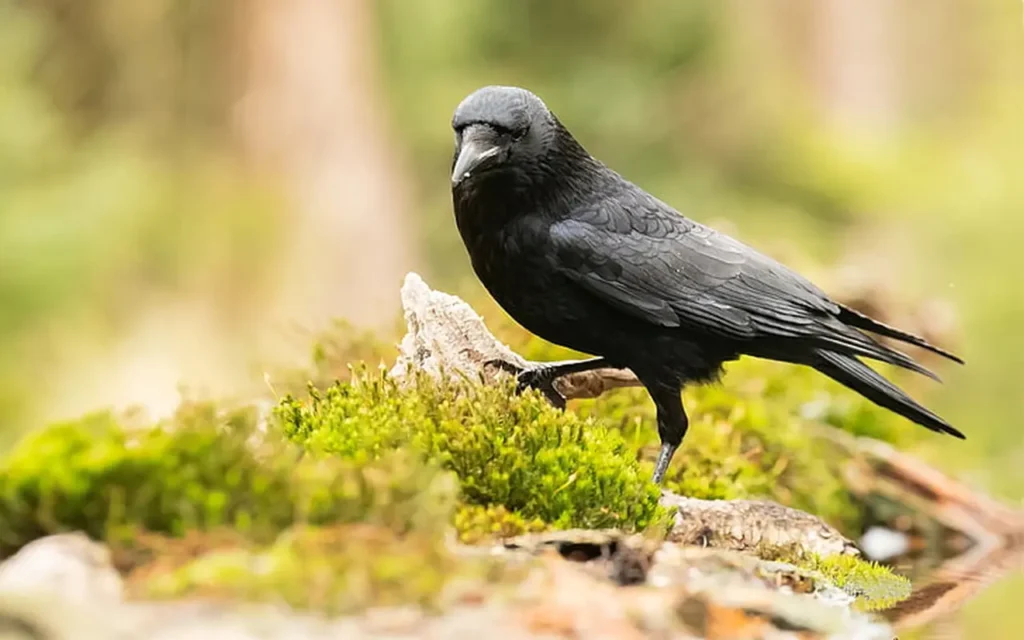
The family Corvidae, commonly known as the crow family or corvids, includes a diverse group of birds known for their intelligence, adaptability, and vocalizations. Here are some notable types of corvids:
- Common Raven (Corvus corax): The largest species in the family, known for its all-black plumage, deep croaking call, and impressive aerial displays. It is found in various habitats across the Northern Hemisphere.
- American Crow (Corvus brachyrhynchos): A widespread and adaptable species with black plumage and a distinctive cawing call. It is native to North America and is often seen in urban and suburban areas.
- Carrion Crow (Corvus corone): Similar in appearance to the American Crow, but found in Europe and parts of Asia. It is known for its glossy black plumage and loud cawing call.
- Eurasian Magpie (Pica pica): Known for its black and white plumage, long tail, and distinctive chattering call. It is found across Europe, Asia, and parts of North Africa.
- Eurasian Jay (Garrulus glandarius): A colorful corvid with a pinkish-brown body, black and white patterned wings, and a blue patch on its wings. It is known for its harsh screeching call and is found in forests of Europe and Asia.
- Western Scrub-Jay (Aphelocoma californica): Found in western North America, it has a blue body, a grayish-brown back, and a crest on its head. It is known for its varied vocalizations and for caching food.
- Steller’s Jay (Cyanocitta stelleri): Native to western North America, it has a blue body, black head, and prominent crest. It is known for its raucous calls and is often found in coniferous forests.
- Green Magpie (Cissa chinensis): Found in parts of Southeast Asia, it has a green body with black markings, a long tail, and a vibrant blue patch on its wings. It is known for its melodious calls and is found in forests and woodlands.
- Hooded Crow (Corvus cornix): Found in Europe, Asia, and parts of the Middle East, it has a gray body, black head, and distinctive grayish-white “hood” around its face. It is known for its varied calls and is often seen in agricultural areas.
- New Caledonian Crow (Corvus moneduloides): Native to the New Caledonia region in the Pacific, it is known for its remarkable tool-using abilities and problem-solving skills. It has black plumage and a strong bill.
- Clark’s Nutcracker (Nucifraga columbiana): Found in western North America, it has a gray body, black wings, and a distinctive black-and-white patterned head. It is known for its ability to cache and retrieve food, especially pine nuts.
- Azure-winged Magpie (Cyanopica cyanus): Native to eastern Asia, it has a black and white body with azure-blue patches on its wings. It is known for its social behavior and its melodious calls.
- Yellow-billed Magpie (Pica nuttalli): Found in California’s Central Valley, it has a black body, white shoulders, and a yellow bill. It is known for its raucous calls and is found in oak woodlands.
- Nutcrackers (Nucifraga genus): This group of corvids includes several species, such as the Spotted Nutcracker (Nucifraga caryocatactes) found in Europe and Asia, and the Clark’s Nutcracker mentioned earlier. They are known for their strong bills and their ability to open hard-shelled nuts.
- Rook (Corvus frugilegus): Found in Europe and parts of Asia, it has a black body with a pale bill and face. It is known for its gregarious behavior, nesting in large colonies called “rookeries.”
- Alpine Chough (Pyrrhocorax graculus): Found in mountainous regions of Europe and Asia, it has a black body with a curved red bill. It is known for its acrobatic flight and its preference for high-altitude habitats.
- Red-billed Chough (Pyrrhocorax pyrrhocorax): Found in Europe, North Africa, and parts of Asia, it has a black body with a bright red bill. It is known for its distinctive calls and its presence in coastal and cliff habitats.
- White-throated Magpie-Jay (Calocitta formosa): Native to western Mexico, it has a blue body, a long tail, and a white throat. It is known for its vocalizations and its social behavior.
- Grey Jay (Perisoreus canadensis): Found in boreal forests of North America, it has a gray body, a black cap, and a short bill. It is known for its tameness and its habit of caching food.
- Black-billed Magpie (Pica hudsonia): Native to western North America, it has a black body, a long tail, and a black bill. It is known for its bold behavior and its vocal repertoire.
- Blue Jay (Cyanocitta cristata): Found in eastern and central North America, it has a blue body with white and black markings. It is known for its boldness, intelligence, and distinctive “jay” calls.
- Eurasian Jackdaw (Corvus monedula): Found in Europe, Asia, and North Africa, it has a black body with grayish-white patches on the sides of its head. It is known for its sociable behavior and its tendency to build nests in cavities.
- Red-billed Blue Magpie (Urocissa erythroryncha): Native to the Himalayas and Southeast Asia, it has a blue body, a long tail, and a bright red bill. It is known for its vibrant plumage and its vocalizations.
- Grey-headed Canary-flycatcher (Culicicapa ceylonensis): Found in South Asia, it has a gray head, a yellowish-green body, and a slender bill. It is known for its insect-catching behavior and its melodious calls.
- Brown Jay (Psilorhinus morio): Native to Central America, it has a brown body with black markings and a distinctive crest on its head. It is known for its complex vocalizations and its foraging habits.
- Azure Jay (Cyanocorax caeruleus): Found in South America, it has a blue body with a black cap and facial mask. It is known for its noisy calls and its preference for forested habitats.
- Racket-tailed Treecreeper (Cormobates leucophaea): Native to Australia and New Guinea, it has a black body with white markings and a long, curved bill. It is known for its climbing ability and its habit of probing bark for insects.
- White-winged Chough (Corcorax melanorhamphos): Found in Australia, it has a black body with white wings and a large curved bill. It is known for its unique vocalizations and its social behavior.
- Long-tailed Tit (Aegithalos caudatus): Found in Europe and Asia, it has a small, compact body with a long tail and a black and white pattern. It is known for its acrobatic flight and its communal nesting behavior.
- Green Jay (Cyanocorax yncas): Native to Central and South America, it has a green body with black markings and a blue crown. It is known for its vibrant plumage and its loud, varied calls.
- White-necked Crow (Corvus leucognaphalus): Found in the Caribbean and Central America, it has a black body with a white nape and throat. It is known for its vocalizations and its adaptability to various habitats.
- Bornean Green Magpie (Cissa jefferyi): Native to Borneo, it has a green body, a long tail, and a black mask around its eyes. It is known for its vibrant plumage and its preference for forested habitats.
- Sri Lanka Blue Magpie (Urocissa ornata): Endemic to Sri Lanka, it has a blue body with a long tail and a black crest on its head. It is known for its bold behavior and its vocalizations.
- Sooty-headed Bulbul (Pycnonotus aurigaster): Found in Southeast Asia, it has a black head, a yellow belly, and a distinctive crest. It is known for its melodic songs and its preference for forest and woodland areas.
- Ratchet-tailed Treecreeper (Certhia manipurensis): Found in parts of Asia, it has a brown body with streaks and a long, curved tail. It is known for its climbing ability and its habit of foraging for insects on tree trunks.
- Siberian Jay (Perisoreus infaustus): Found in northern Eurasia, it has a grayish-brown body, a black cap, and a white throat. It is known for its vocalizations and its foraging behavior during winter months.
- Maroon Oriole (Oriolus traillii): Found in Southeast Asia, it has a black and maroon body with yellow accents. It is known for its melodious calls and its preference for forested habitats.
- Red-billed Blue Magpie (Urocissa erythrorhyncha): Native to East Asia, it has a blue body with a long tail and a bright red bill. It is known for its striking plumage and its social behavior.
- Daurian Jackdaw (Coloeus dauuricus): Found in parts of Asia, it has a black body with a grayish neck and pale eyes. It is known for its gregarious nature and its adaptability to various habitats.
- White-throated Magpie-Jay (Calocitta formosa): Native to western Mexico, it has a blue body, a long tail, and a white throat. It is known for its striking plumage and its vocalizations.
- Flores Crow (Corvus florensis): Endemic to the island of Flores in Indonesia, it has a black body with a distinctive pale blue eye-ring. It is known for its vocalizations and its preference for forested habitats.
- Black-throated Jay (Garrulus glandarius): Found in parts of Europe and Asia, it has a blue body with a black throat and face. It is known for its acrobatic flight and its ability to mimic other bird species.
- Yellow-billed Blue Magpie (Urocissa flavirostris): Native to the Himalayas, it has a blue body, a long tail, and a yellow bill. It is known for its vibrant plumage and its social behavior.
- Formosan Blue Magpie (Urocissa caerulea): Endemic to Taiwan, it has a blue body with a long tail and a black crest on its head. It is known for its striking appearance and its vocalizations.
- Collared Crow (Corvus torquatus): Found in parts of East Asia, it has a black body with a white collar around its neck. It is known for its adaptable behavior and its ability to scavenge in urban areas.
- Gold-billed Magpie (Urocissa flavirostris): Native to Southeast Asia, it has a black body with a vibrant yellow bill. It is known for its striking appearance and its preference for forested habitats.
- Long-tailed Magpie (Urocissa caudata): Found in parts of East Asia, it has a black body with a long tail and a blue patch on its wings. It is known for its vocalizations and its foraging behavior.
- Yellow-billed Blue Magpie (Urocissa flavirostris): Native to the Himalayas, it has a blue body with a long tail and a yellow bill. It is known for its vibrant plumage and its social behavior.
- House Crow (Corvus splendens): Found in parts of Asia, it has a black body with a gray neck and face. It is known for its adaptability to urban environments and its scavenging behavior.
- Iberian Azure-winged Magpie (Cyanopica cooki): Endemic to the Iberian Peninsula, it has a black body with blue patches on its wings. It is known for its social behavior and its ability to mimic sounds.
- White-winged Magpie (Urocissa whiteheadi): Endemic to the Philippines, it has a black body with a white wing patch. It is known for its striking plumage and its preference for forested habitats.
- Brown Jay (Psilorhinus morio): Found in Central America, it has a brown body with black markings and a distinctive crest on its head. It is known for its complex vocalizations and its omnivorous diet.
- Eurasian Nutcracker (Nucifraga caryocatactes): Found in Eurasia, it has a mostly brown body with white markings and a distinctive wedge-shaped tail. It is known for its ability to crack nuts and its caching behavior.
- Red-billed Chough (Pyrrhocorax pyrrhocorax): Found in parts of Europe and Asia, it has a black body with a red bill and legs. It is known for its acrobatic flight and its social behavior.
- Green Magpie (Cissa chinensis): Found in Southeast Asia, it has a green body with a long tail and a black mask around its eyes. It is known for its vibrant plumage and its loud, distinctive calls.
- Black Magpie (Platysmurus leucopterus): Found in Southeast Asia, it has a black body with a white patch on its wings. It is known for its bold behavior and its preference for forested habitats.
- Hooded Crow (Corvus cornix): Found in parts of Europe and Asia, it has a black body with a gray hood around its head. It is known for its adaptability and its opportunistic feeding habits.
- Piapiac (Ptilostomus afer): Found in parts of Africa, it has a black body with a white belly and a distinctive crest on its head. It is known for its raucous calls and its foraging behavior.
- Eurasian Jay (Garrulus glandarius): Found in Europe and parts of Asia, it has a pinkish-brown body with blue patches on its wings. It is known for its intelligence and its ability to mimic sounds.
- Western Scrub-Jay (Aphelocoma californica): Found in western North America, it has a blue body with a grayish-brown back and a distinctive crest on its head. It is known for its vocalizations and its caching behavior.
- Yellow-billed Magpie (Pica nuttalli): Endemic to California, USA, it has a black body with a bright yellow bill. It is known for its striking appearance and its social behavior.
- Azure-winged Magpie (Cyanopica cyana): Found in parts of Europe and Asia, it has a blue body with black markings and a distinctive azure patch on its wings. It is known for its vocalizations and its acrobatic flight.
- Long-billed Crow (Corvus validus): Found in New Guinea, it has a black body with a long, curved bill. It is known for its foraging behavior and its preference for forested habitats.
- New Caledonian Crow (Corvus moneduloides): Endemic to New Caledonia, it has a black body with a large bill. It is known for its problem-solving abilities and its use of tools in foraging.
- Pinyon Jay (Gymnorhinus cyanocephalus): Found in western North America, it has a blue body with a gray head and a white throat. It is known for its social behavior and its reliance on pinyon pine seeds.
- Brown-necked Raven (Corvus ruficollis): Found in parts of Africa and the Middle East, it has a black body with a brown neck. It is known for its scavenging behavior and its adaptability to arid environments.
- Slender-billed Crow (Corvus enca): Found in parts of Asia, it has a black body with a slender bill. It is known for its vocalizations and its preference for forested habitats.
- Collared Treepie (Dendrocitta frontalis): Found in parts of South Asia, it has a black body with a white collar around its neck. It is known for its agile climbing skills and its loud calls.
- Banggai Crow (Corvus unicolor): Endemic to the Banggai Islands in Indonesia, it has a black body with a shaggy crest on its head. It is known for its unique vocalizations and its preference for mangrove forests.
- Ground Tit (Pseudopodoces humilis): Found in the Tibetan Plateau, it has a grayish-brown body with a distinctive crest on its head. It is known for its ground-dwelling behavior and its adaptation to high-altitude environments.
- Rook (Corvus frugilegus): Found in Europe, Asia, and North Africa, it has a black body with a bare gray face. It is known for its communal roosting behavior and its use of tools in foraging.
- White-necked Crow (Corvus leucognaphalus): Found in the Caribbean, it has a black body with a white neck. It is known for its loud calls and its adaptability to various habitats.
- Piping Crow (Corvus typicus): Found in Southeast Asia, it has a black body with a distinctive white face and throat. It is known for its melodious calls and its preference for lowland forests.
- Sri Lanka Blue Magpie (Urocissa ornata): Endemic to Sri Lanka, it has a blue body with a long tail and a black crest on its head. It is known for its colorful plumage and its social behavior.
- White-collared Crow (Corvus edithae): Found in parts of Africa, it has a black body with a white collar around its neck. It is known for its raucous calls and its ability to adapt to various habitats.
- White-crowned Jay (Cyanocorax mystacalis): Found in Central and South America, it has a black body with a white crown on its head. It is known for its social behavior and its preference for forested areas.
- Mariana Crow (Corvus kubaryi): Endemic to the Mariana Islands, it has a black body with a short, curved bill. It is known for its vocalizations and its unique behavior of using tools to extract prey.
- Sinaloa Crow (Corvus sinaloae): Found in Mexico, it has a black body with a distinctive curved bill. It is known for its loud calls and its foraging behavior in open habitats.
- Grey Crow (Corvus tristis): Found in parts of Southeast Asia, it has a gray body with a black head and wings. It is known for its adaptable behavior and its preference for forested areas.
- Bangai Crow (Corvus ossifragus): Found in the Solomon Islands, it has a black body with a shaggy crest on its head. It is known for its vocalizations and its preference for coastal and mangrove habitats.
- Green Jay (Cyanocorax yncas): Found in Central and South America, it has a green body with a black head and wings. It is known for its vibrant plumage and its social behavior.
- Bornean Treepie (Dendrocitta cinerascens): Found in Borneo, it has a black and gray body with a distinctive crest on its head. It is known for its agility in the treetops and its loud, melodious calls.
- Cuban Crow (Corvus nasicus): Found in Cuba, it has a black body with a distinctive hooked bill. It is known for its foraging behavior and its adaptation to urban environments.
- Tamaulipas Crow (Corvus imparatus): Found in northeastern Mexico and southern Texas, it has a black body with a shaggy crest on its head. It is known for its social behavior and its preference for open woodland habitats.
- Sooty Jay (Cyanocorax nigricans): Found in Central and South America, it has a black body with a blue sheen and a long tail. It is known for its raucous calls and its habit of stealing food from other birds.
- Azure-rumped Jay (Cyanocorax caeruleus): Found in South America, it has a blue body with a black head and wings. It is known for its cooperative breeding behavior and its preference for forested habitats.
- Flores Crow (Corvus florensis): Endemic to Flores Island in Indonesia, it has a black body with a shaggy crest on its head. It is known for its vocalizations and its habitat preference for forests and agricultural areas.
- Black-throated Magpie-Jay (Calocitta colliei): Found in Mexico and Central America, it has a black body with a long tail and a blue crest on its head. It is known for its bold behavior and its ability to mimic sounds.
- Grey-headed Crow (Corvus fuscicapillus): Found in parts of Southeast Asia, it has a black body with a gray head. It is known for its loud calls and its preference for lowland forests.
- San Blas Jay (Cyanocorax sanblasianus): Found in western Mexico, it has a black body with a blue sheen and a long tail. It is known for its social behavior and its habitat preference for tropical dry forests.
- Collared Crow (Corvus torquatus): Found in parts of Southeast Asia, it has a black body with a white collar around its neck. It is known for its raucous calls and its preference for forested habitats.
- Cuban Jackdaw (Corvus jamaicensis): Found in Cuba, it has a black body with a gray head and neck. It is known for its social behavior and its ability to adapt to various habitats.
- Eurasian Magpie (Pica pica): Found in Europe, Asia, and North Africa, it has a black and white body with a long tail. It is known for its intelligence and its habit of collecting shiny objects.
- White-billed Crow (Corvus woodfordi): Found in the Solomon Islands, it has a black body with a white bill and throat. It is known for its vocalizations and its preference for forested areas.
- White-winged Chough (Corcorax melanorhamphos): Found in Australia, it has a black body with white wings and a curved bill. It is known for its social behavior and its unique vocalizations.
- Little Crow (Corvus bennetti): Found in Australia, it has a black body with a gray throat and neck. It is known for its opportunistic feeding behavior and its adaptability to various environments.
- Long-tailed Magpie (Urocissa caerulea): Found in parts of Asia, it has a black body with a long tail and a blue patch on its wings. It is known for its striking appearance and its loud calls.
- Sri Lanka Junglefowl (Gallus lafayettii): Endemic to Sri Lanka, it has a colorful plumage with shades of red, orange, and blue. It is known for its elaborate courtship displays and its association with the country’s culture.
- Ground Cuckooshrike (Coracina maxima): Found in parts of Southeast Asia, it has a black body with a white belly and a hooked bill. It is known for its hunting behavior on the ground and its distinctive call.
- Violet Crow (Corvus violaceus): Found in parts of Southeast Asia, it has a black body with a violet sheen. It is known for its gregarious behavior and its preference for forested habitats.
- White-bellied Cuckooshrike (Coracina papuensis): Found in Australia, New Guinea, and surrounding islands, it has a black body with a white belly and a curved bill. It is known for its distinctive call and its preference for forested habitats.
- Black-throated Magpie (Gymnorhina tibicen): Found in Australia, it has a black body with a white belly and a long tail. It is known for its melodious song and its curious behavior.
- Large-billed Crow (Corvus macrorhynchos): Found in parts of Asia, it has a black body with a large bill and a wide distribution range. It is known for its intelligence and adaptability to various habitats.
- Green Magpie (Cissa chinensis): Found in parts of Asia, it has a green body with a long tail and a black mask around its eyes. It is known for its vibrant plumage and its preference for forested areas.
- Grey Treepie (Dendrocitta formosae): Found in parts of Asia, it has a grey body with a black head and wings. It is known for its agile movements in the treetops and its loud, distinctive calls.
- Azure-winged Magpie (Cyanopica cyanus): Found in parts of Europe and Asia, it has a black and white body with blue wings. It is known for its social behavior and its preference for wooded areas.
- Taiwan Blue Magpie (Urocissa caerulea): Endemic to Taiwan, it has a blue body with a long tail and a black crest on its head. It is known for its striking appearance and its vocalizations.
- Slender-billed Crow (Corvus enca): Found in parts of Asia, it has a black body with a slender, curved bill. It is known for its adaptability to various habitats and its distinctive calls.
- Red-billed Blue Magpie (Urocissa erythrorhyncha): Found in parts of Asia, it has a black and white body with a red bill and long tail feathers. It is known for its sociable nature and its bright plumage.
- Collared Jay (Cyanolyca viridicyanus): Found in parts of Central and South America, it has a black body with a blue collar around its neck. It is known for its habitat preference for cloud forests and its beautiful vocalizations.
- Red-billed Chough (Pyrrhocorax pyrrhocorax): Found in parts of Europe, Asia, and North Africa, it has a black body with a red bill and legs. It is known for its acrobatic flight and its habit of nesting on cliffs.
- Blue Jay (Cyanocitta cristata): Found in North America, it has a blue body with white markings on its wings and tail. It is known for its loud calls and its intelligence.
- Brown Jay (Psilorhinus morio): Found in parts of Central and South America, it has a brown body with a black head and blue patches on its wings. It is known for its raucous calls and its omnivorous diet.
- Rufous Treepie (Dendrocitta vagabunda): Found in parts of South Asia, it has a brown and white body with a long tail. It is known for its distinctive calls and its habit of collecting shiny objects.
- White-throated Magpie-Jay (Calocitta formosa): Found in parts of Central America, it has a blue body with a white throat and a long tail. It is known for its bold behavior and its vocalizations.
- Western Scrub-Jay (Aphelocoma californica): Found in western North America, it has a blue body with a gray back and a long tail. It is known for its intelligence and its caching behavior.
- Azure-winged Jay (Cyanocorax caeruleus): Found in parts of South America, it has a blue body with black markings on its face and wings. It is known for its social behavior and its preference for forested habitats.
- Eurasian Jay (Garrulus glandarius): Found in Europe and parts of Asia, it has a pinkish-brown body with blue patches on its wings. It is known for its ability to mimic sounds and its habit of hoarding food.
- Black Magpie (Platysmurus leucopterus): Found in parts of Southeast Asia, it has a black body with a long, graduated tail. It is known for its vocalizations and its preference for forested areas.
- Yellow-billed Magpie (Pica nuttalli): Found in California, United States, it has a black body with a yellow bill and yellow eye patches. It is known for its social behavior and its restricted range.
- Lidth’s Jay (Garrulus lidthi): Found in parts of East Asia, it has a black body with blue and white markings on its wings. It is known for its striking appearance and its vocalizations.
- Rook (Corvus frugilegus): Found in Europe, Asia, and North Africa, it has a black body with a pale bill and face. It is known for its communal nesting behavior and its preference for open habitats.
- White-collared Jay (Cyanolyca viridicyanus): Found in parts of Central America, it has a black body with a blue collar around its neck. It is known for its habitat preference for cloud forests and its beautiful vocalizations.
- Eurasian Nutcracker (Nucifraga caryocatactes): Found in parts of Europe and Asia, it has a brown body with a white belly and black and white wings. It is known for its ability to crack nuts and its caching behavior.
- Bornean Green Magpie (Cissa jefferyi): Found in Borneo, it has a green body with a black mask and wings. It is known for its bright plumage and its preference for lowland rainforests.
- Azure-rumped Jay (Cyanocorax caeruleus): Found in parts of South America, it has a blue body with a white belly and a blue rump. It is known for its social behavior and its vocalizations.
- Siberian Jay (Perisoreus infaustus): Found in northern Eurasia, it has a gray and brown body with a black cap. It is known for its ability to mimic other bird species and its resilience in cold climates.
- Yellow-billed Blue Magpie (Urocissa flavirostris): Found in parts of Asia, it has a black body with a yellow bill and a long tail. It is known for its striking appearance and its loud, melodious calls.
- Taiwan Magpie (Urocissa caerulea): Endemic to Taiwan, it has a black body with a long tail and a white belly. It is known for its striking appearance and its preference for forested areas.
- Palawan Blue Jay (Cyanocorax chrysops): Found in the Philippines, it has a blue body with a black mask and wings. It is known for its vibrant plumage and its habitat preference for lowland forests.
These are just a few examples of the diverse and captivating corvid species found around the world. Each species has its own unique characteristics, adaptations, and behaviors, adding to the intrigue and beauty of this bird family.
